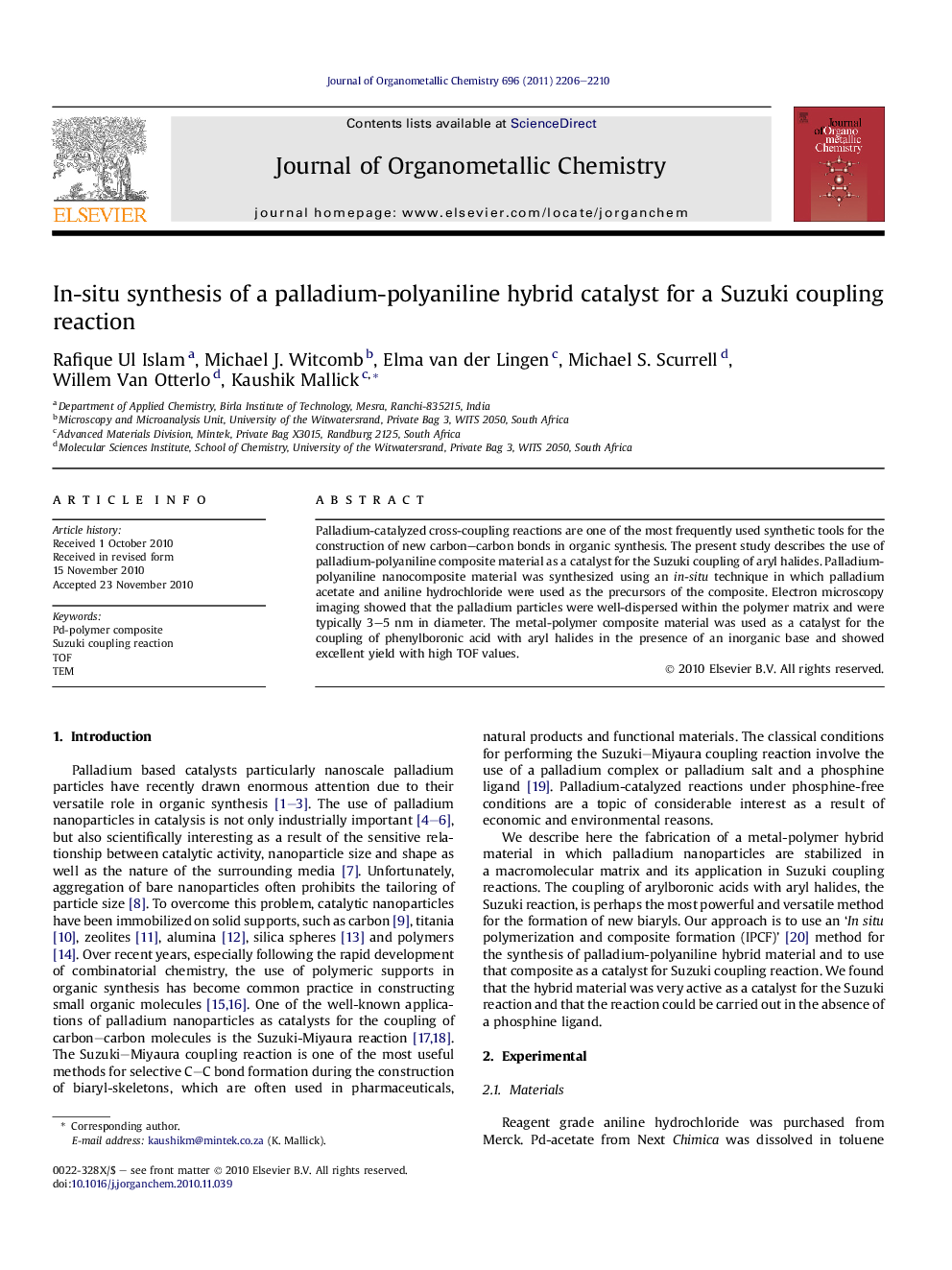| Article ID | Journal | Published Year | Pages | File Type |
|---|---|---|---|---|
| 1326654 | Journal of Organometallic Chemistry | 2011 | 5 Pages |
Palladium-catalyzed cross-coupling reactions are one of the most frequently used synthetic tools for the construction of new carbon–carbon bonds in organic synthesis. The present study describes the use of palladium-polyaniline composite material as a catalyst for the Suzuki coupling of aryl halides. Palladium-polyaniline nanocomposite material was synthesized using an in-situ technique in which palladium acetate and aniline hydrochloride were used as the precursors of the composite. Electron microscopy imaging showed that the palladium particles were well-dispersed within the polymer matrix and were typically 3–5 nm in diameter. The metal-polymer composite material was used as a catalyst for the coupling of phenylboronic acid with aryl halides in the presence of an inorganic base and showed excellent yield with high TOF values.
Graphical abstractPalladium-polyaniline composite material acts as a catalyst for the Suzuki coupling of aryl halides with phenylboronic acid. Palladium-polyaniline nanocomposite material was synthesized using an in-situ technique in which palladium acetate and aniline hydrochloride were used as the precursors of the composite.Figure optionsDownload full-size imageDownload as PowerPoint slideHighlights► Polyaniline stabilized palladium nanoparticle-catalyzed Suzuki cross-coupling reactions show excellent performance in the presence of inorganic base under phosphine-free condition ► The metal-polymer hybrid catalyst was synthesized using an in-situ synthesis route.
